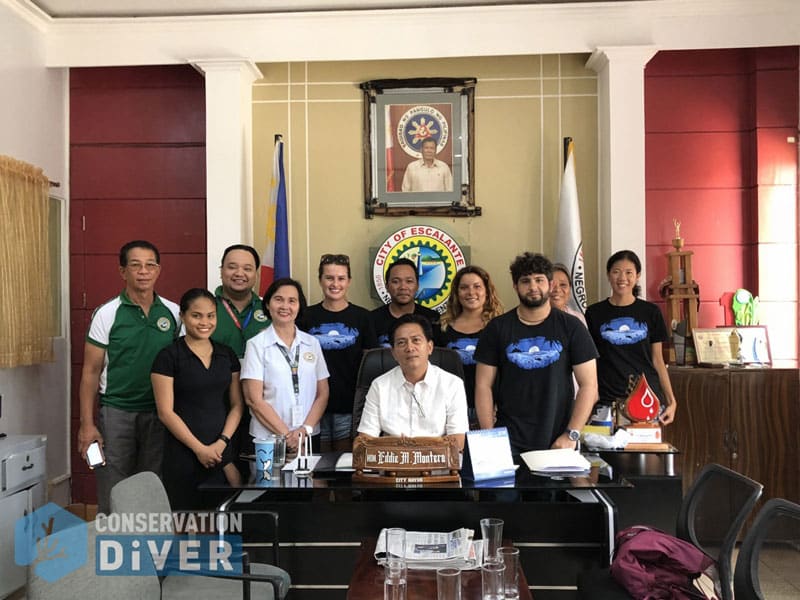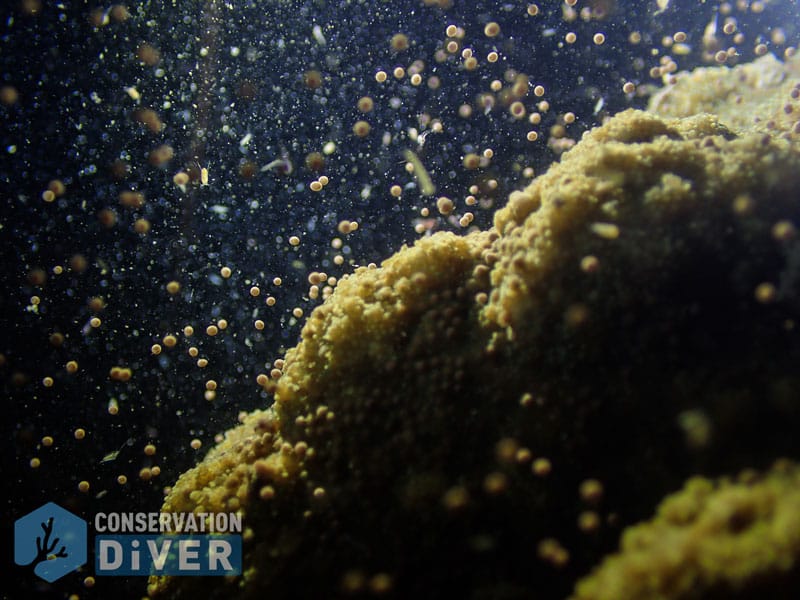The programs and courses offered by Conservation Diver were originally developed alongside local reef managers in an effort to increase the effectiveness and financial sustainability of their valuable work. Increasingly, the protocols and techniques developed under the Conservation Diver syllabus have been applied to promote or improve conservation strategies at various scales in several countries, such as to assess reefs in areas of need.
Last month, research director Rahul Mehrotra and a team of Conservation Divers published their third study, in which skills taught through our courses were applied to promote informed conservation decisions. This time assessments were requested by the government of the Escalante region of the Philippines, including a Marine Protected Area (MPA) that was established 15 years prior. This is the third such expedition Rahul and the team have undertaken and published, and is invaluable for the local governments to assess the actions already taken, and direct the policies that will decide the future fate of the areas and their resources.

The project was supported and carried out in collaboration with our partners at the Love Wildlife Foundation and the University of the Philippines, Cebu. The researchers involved were all trained and certified in Conservation Diver monitoring and data collection techniques, and were thus more than proficient and prepared for the job at hand. Most of the surveys were carried out using SCUBA equipment while diving in coral reef and muck habitats, but additional surveys were also carried out by snorkeling in mangroves and sea grass beds, and by visiting local fish markets.
The team was able to identify and record more than 700 species during the surveys in Escalante, including 191 species of fish, 227 species of cnidarians (corals and related animals), 120 species of mollusks, 58 species of echinoderms , 40 species of crustaceans, and 27 species from the Platyhelminthes phylum (flatworms and their relatives). These findings provide indications that the marine habitats of the area are highly biodiverse, but evidence was also provided showing that they are in dire need of increased protection and enforcement of existing regulations.
Hard coral cover was generally considered ‘fair’ (as most of the country’s reefs were in previous studies), ranging from 16%-66%, with most sites surveyed having coverage greater than 30%. The team was also excited to record coral spawning during the surveys, observing gamete bundles released from both Montipora and Lobophyllia on March 7th. They then witnessed sea urchins and clams spawning during a daytime in a mass event occurring one week later, on March 14th.

The data collected during all the various surveys was used to write a report in order to advise policy changes for the local government. Those changes included zoning to protect the most valuable areas, but still allow for regulated commercial use in order to sustain local economies and livelihoods. It was recognized by the authors that the current MPA’s regulations and enforcement make it ineffective at achieving the original goals as set out 15 years ago. The paper recommended broader participation in decision making and enforcement of the regulations, requiring more stakeholder education and participation. The team also recommended some areas be designated for responsible tourism in order to provide alternative, non-extractive revenue streams for the local communities. Lastly, the authors recommended infrastructure additions such as mooring lines to reduce incidences of anchor damage to the delicate reefs.

This study is something which we at Conservation Diver are quite proud of, not only for its potential impact on policy and sustainability of the reefs in the region, but as a proof of concept of our training system. The thousands of certified students that have been through our programs are proof that there is demand for this type of training; and our success on the local scale, such as on the island of Koh Tao, has proven that we are able to make a tangible difference through the active participation of trained divers as well as create sustainable funding streams to ensure the success of long-term monitoring, protection, and restoration projects. But this expedition in particular also shows that there is a wider application to our methods and techniques that can be utilized to advise governments around the world to make science-based decisions uniquely established for their region, local communities, and customs. We hope to send out more teams on expeditions like this in the future to assess reef health, create more collaborations with local universities and governments, and help to fill in the gaps between those two groups. In doing so, we think that we can create an effective nexus that can realize tangible positive changes in the way that we manage and use our finite reef resources and ensuring that these ecosystems persist and thrive
Download the full report here

